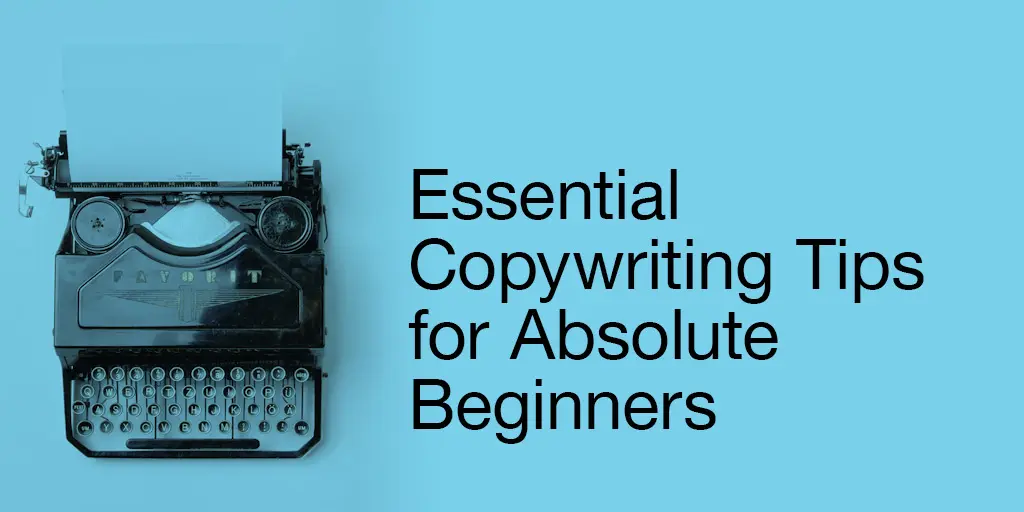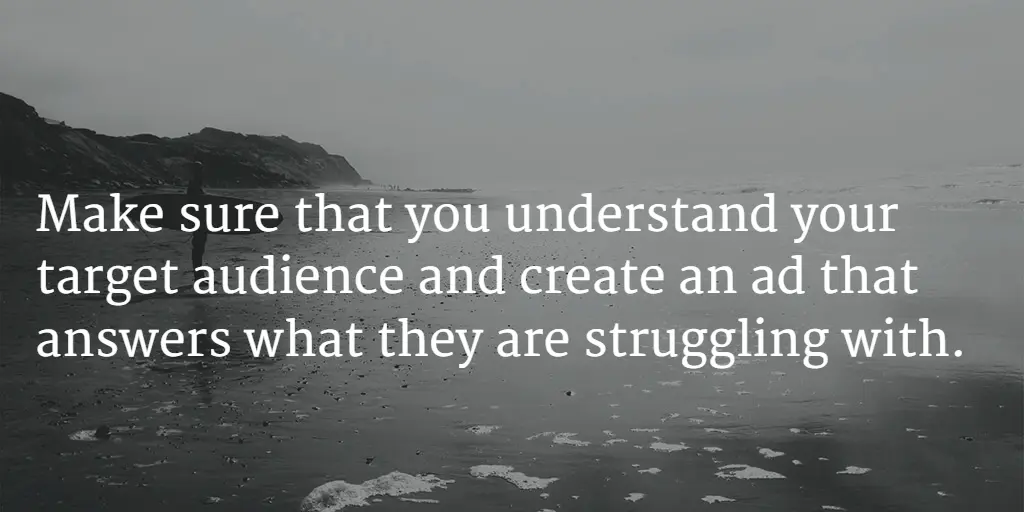Let’s be honest– copywriting can be scary. Even for seasoned writers with nothing to prove, writing advertisements or marketing content can be daunting and terrifying. Copywriting is the literary equivalent of climbing Mount Everest, if you can imagine Mount Everest covered in junk mail and sales papers. You know it can be done, you’ve seen it done well, but you’ve also seen a lot of people die trying and you don’t want to be one of those fatalities.

Why is copywriting so difficult?
It’s not because copywriting is technically difficult. In fact, absolute beginners can create successful, engaging copy (stay tuned for the tips below).
It’s that, for most of us, the idea of selling something is already unnerving. Who wants to come across as a slimy salesperson? Plus, with writing, there’s a delay between copy being created and the other person reading it. You’re vulnerable without the luxury of self-correcting based on that person’s body language. You have to release your words into the ether and hope that someone receives it and acts upon it.
Scary stuff.
But there’s light at the end of the tunnel. Copywriting can be broken into six easy-to-manage steps. Are you ready to get started? Let’s start each tip with a little help from copywriting masters.
1. Sell Benefits, Not Features
“Consumers do not buy products. They buy product benefits.”
-David Ogilvy
Have you ever heard the phrase, “Sell a good night’s sleep, not the mattress”? Think about all of the mattress commercials and advertisements you’ve seen before. Do they lead with coil count or insulation padding details? Nah. They sell you on how comfortable the mattress is, how well you’ll sleep on it, and how much more productive and enjoyable your days will be when you are well-rested. They want you to positively frame their product, envision yourself using it, and negate any potential concerns you may have.
Similarly, you can use this formula in your own copy:
2. Write Plainly
“Copy is a direct conversation with the consumer.”
-Shirley Polykoff
This is a big one. If you don’t speak in the language that your customer relates to, you’ll lose them way before your irresistible offer. Above everything, you want your copy to sound almost like an internal dialogue. It should mimic what a person would say internally when convincing themselves to buy your product or service.
For example, you may want your customer to say something like, Hey, this phone will allow me to take HD video and still fit in my pocket. It’ll be great when I don’t want to carry my bulky DSLR.
If that’s what you want to convey, make it plain. Don’t use literary acrobatics when you could just as easily arrange a sentence to say, Leave the bulky DSLR at home. Record HD video with a phone that can fit in your pocket.
3. Focus on the Headline

“On the average, five times as many people read the headlines as read the body copy.”
-David Ogilvy
The headline is the most important part of your copy. It’s how you capture their attention in the first place. Here are a few tried and true formulas for creating a headline that draws a crowd:

4. Make it Relevant
“Nobody reads ads. People read what interests them. Sometimes it’s an ad.”
-Howard Gossage
Do you ever look for ads? If you’re like most people, you don’t seek out ads for fun, because you’re ruthlessly protective of your time and attention. The ads you notice are those that jump out at you because of a catchy headline or visual appeal, but the only ones you continue read are highly relevant to your predicament.
Make sure that you understand your target audience and create an ad that answers what they are struggling with.
It’s a good idea to write down exactly who you want to reach. Create a persona. Make a name, assign an age, gender, and location. Understand why they buy and what turns them away from closing the deal. Then, direct your ad copy to that one persona. Speak directly to them, and by being specific, you’ll increase your ability to reach more people.
5. Commit to Research
“I spend a long time studying the precedents. I look at every advertisement which has appeared for competing products during the past 20 years.”
-David Ogilvy
Going along with that previous point, you should definitely commit to understanding your customer’s pain points. What drives them? What type of person are they (discovered in the step 4 above)? Why would they even want to read your ad? What’s in it for them? Lead with that information.
As in the quote above, father of advertising, David Ogilvy shared that he spent a great deal of time researching the competitors. Not only did he find out what they sold, but also how they sold, and how the market responding to them.
Competitor research is important, but you also have to be extremely familiar with your own product or service. Rolls Royce was one of the first major accounts Ogilvy won when his agency was in its early years. In his book, he talks about spending a full three weeks reading about the car to come up with one simple headline: “At sixty miles an hour, the loudest noise comes from the electric clock.” This might not seem like the type of detail that would take you three weeks to find, but sometimes you need to give your brain time to let the information soak in.
The research step is crucial in creating a copy that convinces. You have to know who’s competing for the same customer’s attention and what they’re saying. Then you have to determine how to do it better by playing up the benefits of your own offering.
6. Clarify the Obvious
“Sometimes the most important job advertising can do, is to clarify the obvious.”
-Jay Chiat
Your audience needs to recognize your product or service as the long-awaited solution to their problem. Are you positioning yourself in that way, or are you passively sharing information in hopes that they’ll connect the dots? Let me be clear– they won’t.
You have to be clear with your copy. If you’re selling yourself as a social media marketer, you can’t simply say, “If you need a social media marketer, I’m your guy (or gal).” You want to actively show your potential clients why they should choose your services (for example, Choose me because I have five years’ worth of experience in improving social media awareness for big brands, like…).
Final Thoughts: Just Start Writing

I’ll leave you with this final thought from William Faulkner, “Get it down. Take chances. It may be bad, but it’s the only way you can do anything good.”
Take it from someone who writes for a living: Just start writing. Your first idea is probably not going to be a winner, and that’s why you should get it out of the way as soon as possible. Write out all of the ideas you have for your copy, no matter how silly– you may be surprised at what gems come out of a brainstorming session where you don’t edit or criticize your creativity.
Remember, no one will read it until you’re ready. Just give your ideas room to breathe, and they’ll take a life of their own.
Read more Copywriting for Conversions with the next chapter:
3. Audience Research
Before you can write copy that converts, you need to understand your audience.

